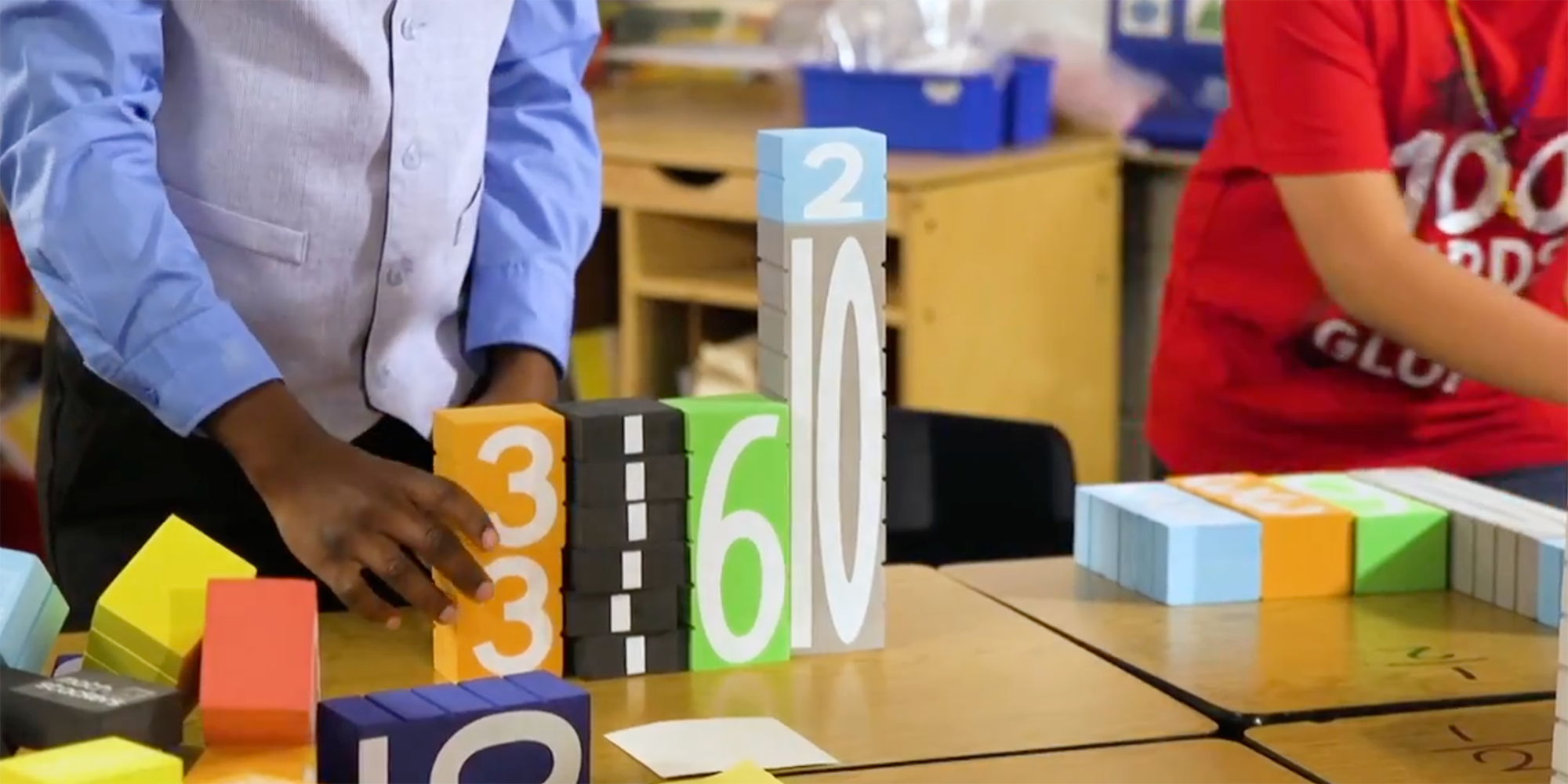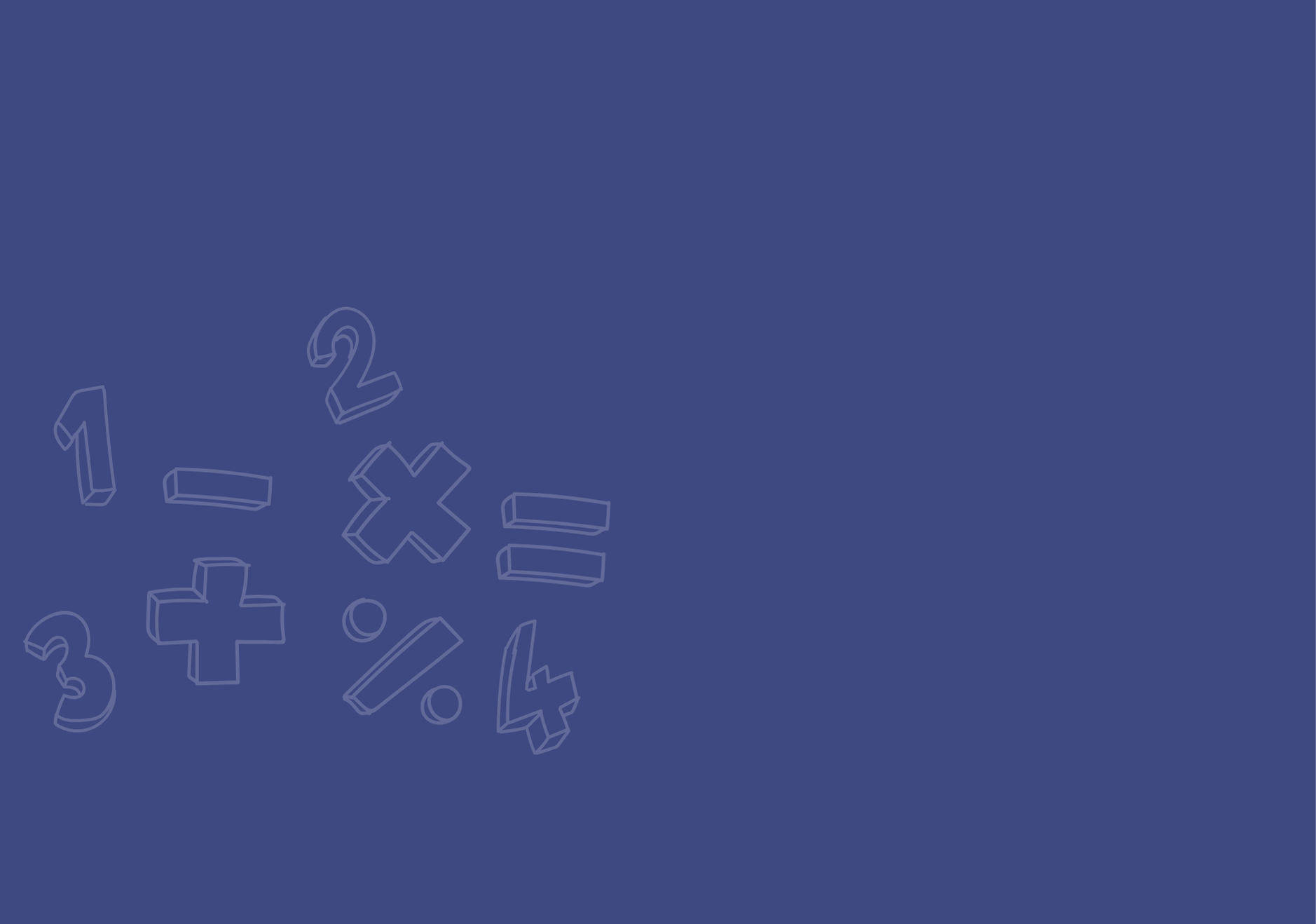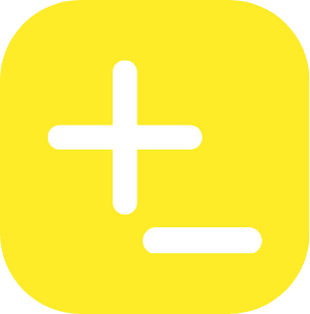*Click above to view standards for 2nd grade addition & subtraction, multiplication, & fractions.
TEKS: ADDITION, SUBTRACTION, & DATA ANALYSIS
2.1 Mathematical process standards. The student uses mathematical processes to acquire and demonstrate mathematical understanding. The student is expected to:
- A. Apply mathematics to problems arising in everyday life, society, and the workplace;
- B. Use a problem-solving model that incorporates analyzing given information, formulating a plan or strategy, determining a solution, justifying the solution, and evaluating the problem-solving process and the reasonableness of the solution;
- C. Select tools, including real objects, manipulatives, paper and pencil, and technology as appropriate, and techniques, including mental math, estimation, and number sense as appropriate, to solve problems;
- D. Communicate mathematical ideas, reasoning, and their implications using multiple representations, including symbols, diagrams, graphs, and language as appropriate;
- E. Create and use representations to organize, record, and communicate mathematical ideas;
- F. Analyze mathematical relationships to connect and communicate mathematical ideas;
- G. Display, explain, and justify mathematical ideas and arguments using precise mathematical language in written or oral communication.
2.4 Number and operations. The student applies mathematical process standards to develop and use strategies and methods for whole number computations in order to solve addition and subtraction problems with efficiency and accuracy. The student is expected to:
- A. Recall basic facts to add and subtract within 20 with automaticity;
- B. Add up to four two-digit numbers and subtract two-digit numbers using mental strategies and algorithms based on knowledge of place value and properties of operations.
2.7 Algebraic reasoning. The student applies mathematical process standards to identify and apply number patterns within properties of numbers and operations in order to describe relationships. The student is expected to:
- A. Determine whether a number up to 40 is even or odd using pairings of objects to represent the number;
- C. Represent and solve addition and subtraction word problems where unknowns may be any one of the terms in the problem.
2.10 Data analysis. The student applies mathematical process standards to organize data to make it useful for interpreting information and solving problems. The student is expected to:
- A. Explain that the length of a bar in a bar graph or the number of pictures in a pictograph represents the number of data points for a given category;
- B. Organize a collection of data with up to four categories using pictographs and bar graphs with intervals of one or more;
- C. Write and solve one-step word problems involving addition or subtraction using data represented within pictographs and bar graphs with intervals of one; and
- D. Draw conclusions and make predictions from information in a graph.
COMMON CORE: ADDITION, SUBTRACTION, MEASUREMENT & DATA
Operations & Algebraic Thinking:
Represent and solve problems involving addition and subtraction.
- 2.OA.A.1 Use addition and subtraction within 100 to solve one- and two-step word problems involving situations of adding to, taking from, putting together, taking apart, and comparing, with unknowns in all positions, e.g., by using drawings and equations with a symbol for the unknown number to represent the problem.
Add and subtract within 20.
- 2.OA.B.2 Fluently add and subtract within 20 using mental strategies. By end of Grade 2, know from memory all sums of two one-digit numbers.
Number & Operation in Base Ten:
Use place value understanding and properties of operations to add and subtract.
- 2.NBT.B.5 Fluently add and subtract within 100 using strategies based on place value, properties of operations, and/or the relationship between addition and subtraction.
- 2.NBT.B.6 Add up to four two-digit numbers using strategies based on place value and properties of operations.
- 2.NBT.B.9 Explain why addition and subtraction strategies work, using place value and the properties of operations.
Measurement & Data
Measure and estimate lengths in standard units.
- 2.MD.A.2 Measure the length of an object twice, using length units of different lengths for the two measurements; describe how the two measurements relate to the size of the unit chosen.
- 2.MD.A.4 Measure to determine how much longer one object is than another, expressing the length difference in terms of a standard length unit.
Relate addition and subtraction to length.
- 2.MD.B.5 Use addition and subtraction within 100 to solve word problems involving lengths that are given in the same units, e.g., by using drawings (such as drawings of rulers) and equations with a symbol for the unknown number to represent the problem.
- 2.MD.B.6 Represent whole numbers as lengths from 0 on a number line diagram with equally spaced points corresponding to the numbers 0, 1, 2, ..., and represent whole-number sums and differences within 100 on a number line diagram.
Represent and interpret data.
- 2.MD.D.9 Generate measurement data by measuring lengths of several objects to the nearest whole unit, or by making repeated measurements of the same object. Show the measurements by making a line plot, where the horizontal scale is marked off in whole-number units.
- 2.MD.D.10 Draw a picture graph and a bar graph (with single-unit scale) to represent a data set with up to four categories. Solve simple put-together, take-apart, and compare problemsusing information presented in a bar graph.
TEKS: MULTIPLICATION
2.1 Mathematical process standards. The student uses mathematical processes to acquire and demonstrate mathematical understanding. The student is expected to:
- A. Apply mathematics to problems arising in everyday life, society, and the workplace;
- B. Use a problem-solving model that incorporates analyzing given information, formulating a plan or strategy, determining a solution, justifying the solution, and evaluating the problem-solving process and the reasonableness of the solution;
- C. Select tools, including real objects, manipulatives, paper and pencil, and technology as appropriate, and techniques, including mental math, estimation, and number sense as appropriate, to solve problems;
- D. Communicate mathematical ideas, reasoning, and their implications using multiple representations, including symbols, diagrams, graphs, and language as appropriate;
- E. Create and use representations to organize, record, and communicate mathematical idea;
- F. Analyze mathematical relationships to connect and communicate mathematical ideas;
- G. Display, explain, and justify mathematical ideas and arguments using precise mathematical language in written or oral communication.
2.6 Number and operations. The student applies mathematical process standards to connect repeated addition and subtraction to multiplication and division situations that involve equal groupings and shares. The student is expected to:
- A. Model, create, and describe contextual multiplication situations in which equivalent sets of concrete objects are joined;
- B. Model, create, and describe contextual division situations in which a set of concrete objects is separated into equivalent sets.
COMMON CORE: MULTIPLICATION
Operations & Algebraic Thinking
Work with equal groups of objects to gain foundations for multiplication.
- 2.OA.C.3 Determine whether a group of objects (up to 20) has an odd or even number of members, e.g., by pairing objects or counting them by 2s; write an equation to express an even number as a sum of two equal addends.
- 2.OA.C.4 Use addition to find the total number of objects arranged in rectangular arrays with up to 5 rows and up to 5 columns; write an equation to express the total as a sum of equal addends.
TEKS: FRACTIONS
2.1 Mathematical process standards. The student uses mathematical processes to acquire and demonstrate mathematical understanding. The student is expected to:
- A. Apply mathematics to problems arising in everyday life, society, and the workplace;
- B. Use a problem-solving model that incorporates analyzing given information, formulating a plan or strategy, determining a solution, justifying the solution, and evaluating the problem-solving process and the reasonableness of the solution;
- C. Select tools, including real objects, manipulatives, paper and pencil, and technology as appropriate, and techniques, including mental math, estimation, and number sense as appropriate, to solve problems;
- D. Communicate mathematical ideas, reasoning, and their implications using multiple representations, including symbols, diagrams, graphs, and language as appropriate;
- E. Create and use representations to organize, record, and communicate mathematical ideas;
- F. Analyze mathematical relationships to connect and communicate mathematical ideas;
- G. Display, explain, and justify mathematical ideas and arguments using precise mathematical language in written or oral communication.
2.3 Number and operations. The student applies mathematical process standards to recognize and represent fractional units and communicates how they are used to name parts of a whole. The student is expected to:
- A. Partition objects into equal parts and name the parts, including halves, fourths, and eighths, using words;
- B. Explain that the more fractional parts used to make a whole, the smaller the part; and the fewer the fractional parts, the larger the part;
- C. Use concrete models to count fractional parts beyond one whole using words and recognize how many parts it takes to equal one whole;
- D. Identify examples and non-examples of halves, fourths, and eighths.
Measurement & Data
Reason with shapes and their attributes.
- 3.G.A.2 Partition shapes into parts with equal areas. Express the area of each part as a unit fraction of the whole. For example, partition a shape into 4 parts with equal area, and describe the area of each part as 1/4 of the area of the shape.


















